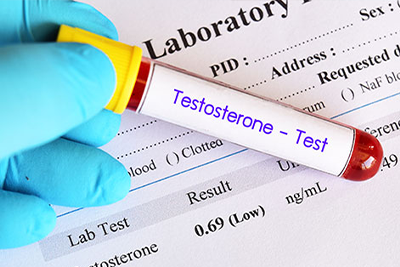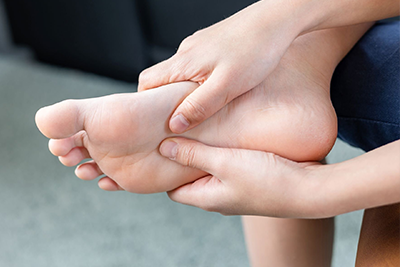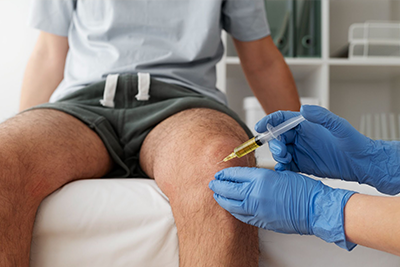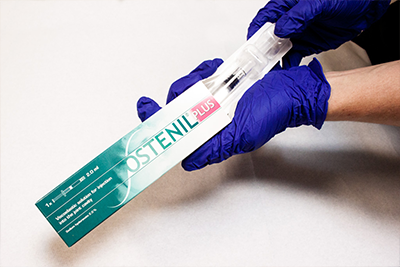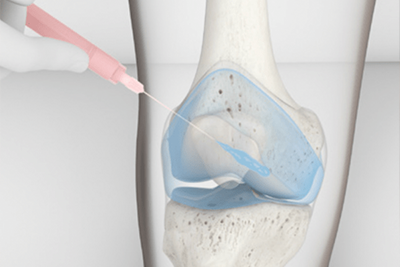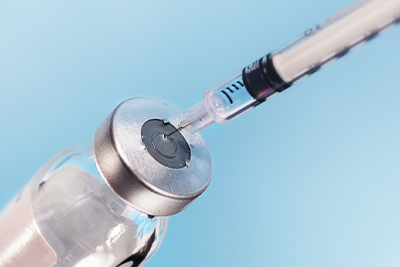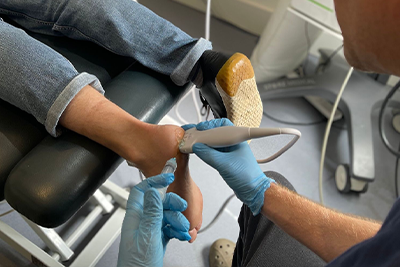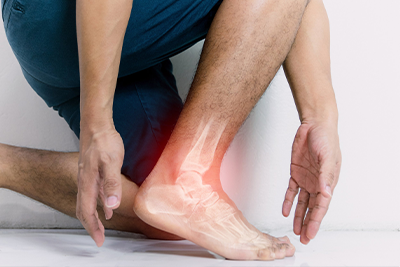Hyaluronic acid (HA) injections have become an essential treatment for managing osteoarthritis (OA), particularly in patients who have not responded well to conventional treatments. At Vale Health Clinic, we provide expert-guided HA injections, helping patients achieve pain relief and improved mobility without surgery.
Osteoarthritis and Hyaluronic Acid
Osteoarthritis is a degenerative joint condition that affects millions worldwide. It causes pain, stiffness, and reduced joint function. It primarily affects weight-bearing joints such as the knees, hips, spine, and hands. The disease leads to the breakdown of protective cartilage, resulting in increased friction between bones and inflammation.
Hyaluronic acid is a primary component of joint lubrication, a naturally occurring substance in synovial fluid. This fluid provides cushioning, absorbs shock, and ensures smooth movement of the joints. However, in individuals with OA, the concentration of hyaluronic acid diminishes, leading to stiffness and discomfort. HA injections replenish this lost fluid, restoring joint lubrication and reducing pain. Beyond lubrication, HA also has anti-inflammatory properties, helps protect cartilage from further degeneration, and can stimulate the body’s natural production of hyaluronic acid, contributing to long-term joint health.
Ideal Candidates for Hyaluronic Acid Injections
Severity of Osteoarthritis
HA injections are most effective for individuals with mild to moderate osteoarthritis. In these cases, the joint retains some cartilage, allowing the injected hyaluronic acid to improve lubrication and reduce inflammation. In patients with severe OA, where significant cartilage loss and structural damage have occurred, HA injections may be less effective, and alternative treatments such as joint replacement may be considered. However, some patients with advanced OA who are not candidates for surgery may still benefit from HA injections as part of a pain management strategy.
Patient Age and Activity Level
Age is an important consideration when determining suitability for HA injections. While younger patients with early-stage OA may benefit from viscosupplementation as a preventive measure, older adults who wish to delay or avoid surgery can also achieve significant symptom relief. Active individuals, particularly athletes or those with physically demanding jobs, may find HA injections beneficial in maintaining joint function and mobility. Additionally, HA injections can serve as a bridge therapy for individuals who want to continue physical activity while delaying surgical interventions.
Response to Previous Treatments
Patients who have not found adequate relief from nonsteroidal anti-inflammatory drugs (NSAIDs), physical therapy, or lifestyle modifications may be good candidates for HA injections. Those seeking an alternative to corticosteroid injections or long-term pain medication due to potential side effects may also benefit from this treatment. HA injections provide a non-steroidal, longer-lasting alternative to corticosteroid injections, which may have diminishing effects with repeated use.
| Criteria | Suitable | Not Suitable |
| Severity of OA | Mild to Moderate | Severe |
| Age | Elderly patients may have nuanced outcomes | Very young or very old might have specific considerations |
| Previous Treatments | Non-responders to NSAIDs/physical therapy | Successful management with less invasive treatments |
| Initial Response to HA | Positive initial response indicates likely success | Lack of initial response might suggest revaluation |
How Hyaluronic Acid Injections Work
HA injections are administered directly into the affected joint to restore lubrication, reduce pain, and improve mobility. This procedure is typically performed under imaging guidance to ensure precision. Once injected, the hyaluronic acid enhances the viscosity of the synovial fluid, providing cushioning and reducing friction between bones.
Benefits of HA injections include:
- Reduction in pain and inflammation
- Improved joint mobility and function
- Delayed progression of osteoarthritis symptoms
- Potential to postpone or avoid joint replacement surgery
- Protection of existing cartilage by reducing mechanical stress on the joint
Patients often experience relief within two to four weeks after their first injection, with results lasting several months. Depending on individual response, follow-up injections may be recommended to maintain joint health and mobility.
Contraindications and Considerations
While HA injections are generally safe, they are not suitable for everyone. Specific conditions or circumstances may prevent patients from receiving this treatment, including:
- Severe osteoarthritis: HA injections may provide limited benefit if the joint is extensively damaged.
- Active joint infections or skin conditions: Injections should not be administered if there is an infection in or around the joint.
- Known allergies to HA products: Although rare, allergic reactions can occur in individuals sensitive to HA formulations.
- Patients with inflammatory arthritis: Conditions like rheumatoid arthritis or gout may not respond well to HA injections and require alternative treatments.
- Previous failed response to HA injections: If a patient has had no relief from HA injections, alternative treatment approaches may be considered.
A thorough consultation with a healthcare provider is essential to determine if HA injections are the right treatment option for each patient.
Types of Hyaluronic Acid Injections at Vale Health Clinic
At Vale Health Clinic, we offer several advanced HA injection formulations tailored to individual patient needs:
- Cingal – Combines hyaluronic acid with a corticosteroid for immediate pain relief and long-term joint lubrication.
- Durolane – A single-injection, high-molecular-weight HA treatment that provides extended symptom relief.
- Ostenil – A non-animal derived HA formulation designed to enhance joint function and reduce pain.
Our experienced practitioners will assess your joint condition and recommend the most appropriate HA injection to achieve the best results.
Vale Health Clinic in Kent
At Vale Health Clinic, we specialise in providing guided HA injections, focusing on patient comfort and effectiveness. Our approach includes:
We utilise advanced imaging technology to ensure precise injections, maximising effectiveness while minimising discomfort. Every treatment is customised to the patient’s condition, considering factors such as OA severity, previous treatments, and lifestyle. Our holistic, non-invasive approach integrates HA injections into a broader osteoarthritis management plan, which may include physiotherapy, lifestyle modifications, and other non-surgical interventions.
If you’re considering hyaluronic acid injections for joint pain relief, contact Vale Health Clinic today to schedule a consultation. Our team is dedicated to helping you find the best treatment plan to improve your mobility and overall well-being. With our expert-guided approach and advanced treatments, we aim to provide long-term solutions for joint health and pain management.
Related Articles
- Ostenil Plus: Hyaluronic Acid Injections
- How Effective are Hyaluronic Acid Injections?
- Knee Osteoarthritis: Symptoms and Treatment
- Benefits of Hyaluronic Acid Injections for Osteoarthritis
- Hyaluronic Acid Injections FAQs


